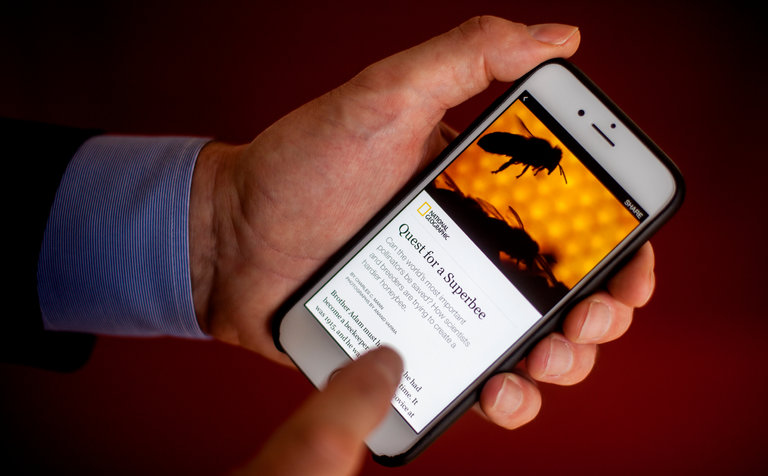Facebook Subscription Tool, Google News Feed, Flipboard Referrals, News Brand Recognition Study, Women in Media, TFP’s Infographic Pick of the Week, TFP’s AEMM E-Book on Amazon
Welcome to Technology for Publishing’s roundup of news, stories of interest, and tips for media industry pros! This week, we’re sharing posts about Facebook’s attempt to appease publishers, Google’s rollout of a personalized news feed, publishers getting “solid” Flipboard referral traffic, a study on news brand vs. platform recognition, and more.
 To help smooth out its rocky relationship with publishers, Facebook is reportedly designing a tool that will direct readers to subscribe to news outlets that publish their content directly on the social media site through Facebook Instant Articles. According to Campbell Brown, head of Facebook’s news partnerships, the move is intended to “better support subscription business models on Facebook” and thus drive more revenue for publishers. There are downsides for media companies, though. Among those is the risk of “a bundling effect,” whereby readers could access “potentially hundreds of free articles a month—10 from The New York Times, 10 from The Washington Post, 10 from The Wall Street Journal, and so on—before they are asked to pay,” the New York Times noted.
To help smooth out its rocky relationship with publishers, Facebook is reportedly designing a tool that will direct readers to subscribe to news outlets that publish their content directly on the social media site through Facebook Instant Articles. According to Campbell Brown, head of Facebook’s news partnerships, the move is intended to “better support subscription business models on Facebook” and thus drive more revenue for publishers. There are downsides for media companies, though. Among those is the risk of “a bundling effect,” whereby readers could access “potentially hundreds of free articles a month—10 from The New York Times, 10 from The Washington Post, 10 from The Wall Street Journal, and so on—before they are asked to pay,” the New York Times noted.- Google’s upping its game too: It announced its news feed will soon feature a stream of articles, videos, and other content personalized for individual users of its app, which will now be called simply Google. A Verge post explains that the feed will be populated with content of interest, based on the user’s search history and topics followed. The feed “is designed to turn Google’s app into a destination for browsing as well as search,” the article says. “Google is hoping you’ll begin opening its app the way you do Facebook or Twitter, checking it reflexively throughout the day for quick hits of news and information.”
- Meanwhile, publishers are seeing some good traffic from Flipboard, Digiday reported, noting the aggregator platform has added dozens of titles in the past six months. Although it doesn’t generate the traffic that Facebook, Google, and Twitter do, “referral numbers are solid,” says Time Inc. U.K.’s Sam Robson. And Flipboard requires a lot less effort than the big platforms: “Flipboard simply takes the RSS feed, displays publisher content and directs traffic back to publishers’ sites, where they can monetize their traffic and keep the user data,” the article explains. Says Robson, “It’s essentially zero effort, which is really attractive.”
- Now for a reality check: A recent Reuters Institute study found that only 37% of readers who access news articles from search and 47% of those who consume stories on social media can recall the original news publisher two days later. In contrast, 70% of readers on Facebook and 60% on Twitter can remember in the same time frame which platform they found a news article on. While news outlets “with strong brand identity can cut through the noise online,” those findings don’t bode well for lesser known news brands, a Nieman Lab post points out. “Some weaker brands may be forced to re-evaluate the use of these platforms for marketing—or click-through—and develop alternative approaches,” the report’s authors say.
On the Technology for Publishing Blog
- Check out TFP’s new Women in Media roundup: This issue highlights Journalist of the Year April Ryan, the 2017 Folio: Top Women in Media awards, female leaders “disrupting the status quo,” the success of Gwenyth Paltrow’s Goop brand, and more.
- This week’s infographic pick details the three key categories of visual content—static, interactive, and live motion. Find out which visual will work best for your type of content.
- Our new e-Book is on Amazon! Get your copy of Building Apps with Adobe Experience Manager Mobile, the go-to guide for building great AEMM apps.
- ICYMI: We interviewed Claudia Smukler, production director at Mother Jones, to find out what goes on behind the scenes at the 2017 Magazine of the Year. Also see our latest InDesign Tip on Publish Online embed and share options.
Image: Sam Hodgson/The New York Times
Visit our blog for highlights of interesting and noteworthy stories from the publishing world every Friday, and sign up for TFP’s This Week in Publishing newsletter. Think we missed something great? Let us know! Leave a comment below or drop us a note.
Posted by: Monica Sambataro


